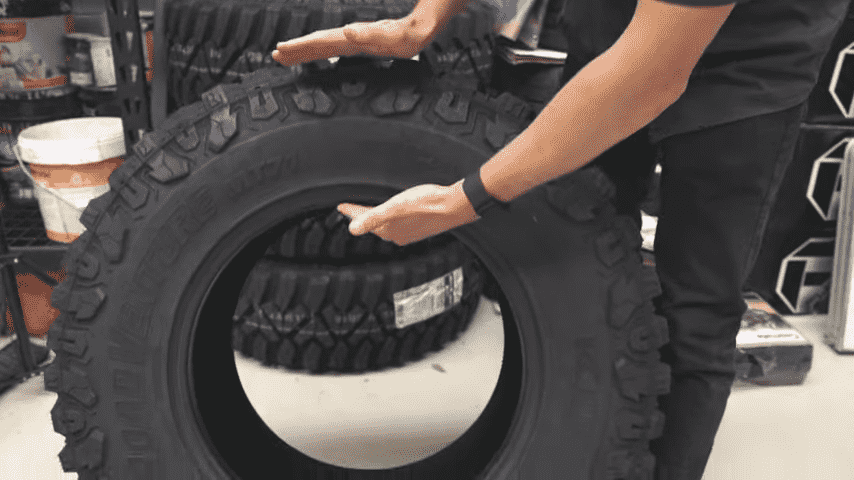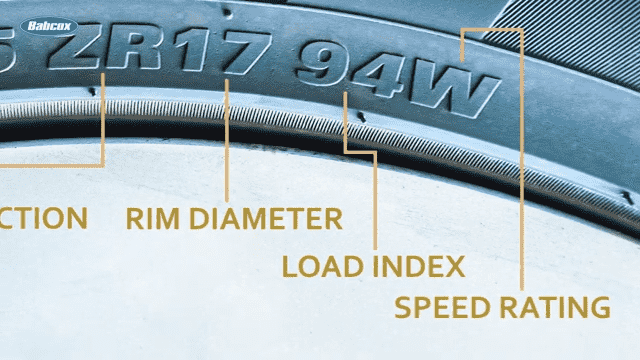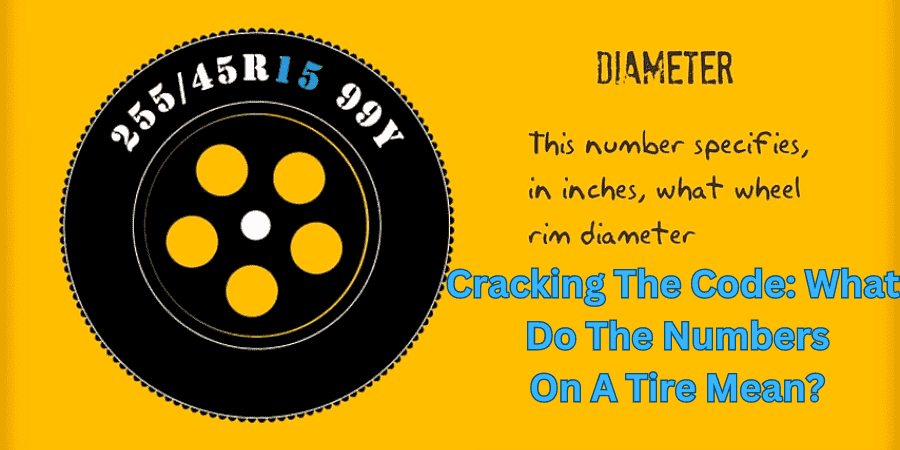If you looked at the numbers on your tire, did they make no sense at all? You’re not alone! These numbers are hard for many drivers to understand, and they worry about how to pick the right tire for their car. Knowing these numbers is very important for keeping your vehicle safe and running well. Let’s figure out what these strange markings on your tires mean so you can drive with trust and peace of mind.
What is a Tire Sidewall?

The smooth and vertical part of the tire between the tread and the bead is called the tire sidewall. It provides important information about tire type, size, and performance rating.
Understand The Tire Size And Codes
Now, we can discuss all the numbers, symbols, and letters. Every letter and number has a different meaning. These codes provide important information about the tire to choose the right tire for your vehicle and driving conditions
1: Tire Type
The first number in the codes now tells what type of tire to use.
P stands for passenger car tire. These tires are designed for cars, minivans, and SUVs used for personal transportation.
LT (Light Truck Tires): These tires are designed to fit bigger vehicles like pickup trucks, SUVs, and vans. They make it easy for those vehicles to carry heavy loads and drive on difficult surfaces.
ST (Special Trailer Tires): These tires are designed to work with trailers and give you great stability and control when you’re pulling heavy loads. They aren’t made for cars or trucks, but they are necessary for safe driving.
2: Tire Width
The space between the two sidewalls is known as the tire width. The three digits are the width of the tire in 215 mm.
3: Aspect Ratio
The aspect ratio of a tire is the height of its side compared to its width. It’s shown as a percentage. The two digits 65 on the sidewall are the aspect ratio of the tire. A higher number means a taller side, giving a smoother ride.
4: Construction Type
The construction type tells how a tire is built. A single letter R (radial) is the type of construction, and Bias-ply tires are also used. Radial tires have layers of fabric that run across them, providing flexibility and better heat dissipation than bias-ply tires.
5: Tire Diameter
The tire diameter is measured from one end to the other, where it is tightly attached to the wheel. Two digits 15 are the diameter of the tire in inches.
6: Load Index And Speed Rating

Load Index: The load index of tires tells you how much weight they can carry when fully filled.
This number is also shown on the tire sidewall. For example, a tire with a load index of 95 can support up to 1,521 pounds. It’s really important to follow the weight limit for safety reasons.
Speed Rating: A Speed Rating tells the maximum speed a tire can handle safely. The letter H on the sidewall is known as the speed rating.
Speed Rating Chart
Here is the speed rating chart according to mph and km/h:
| Speed Symbol | Speed (mph) | Speed (km/h) |
| Q | 99 | 160 |
| S | 112 | 180 |
| T | 118 | 190 |
| U | 124 | 200 |
| H | 130 | 210 |
| V | 149 | 240 |
| W | 168 | 270 |
| Y | 186 | 300 |
Additional Markings
Temperature, Traction, and Treadwear Grades
The Uniform Tyre Quality Grading (UTQG) method uses these grades to show how well a tire handles temperatures, how well it grips the road, and how long its treadwear remains.
UTQG Ratings Explained
- Temperature Grade: Indicates the tire’s ability to dissipate heat (A, B, or C).
- Traction Grade: Measures wet traction capability (AA, A, B, or C).
- Treadwear Grade: A numeric value indicating the expected tread life.
What is the DOT Code?
The DOT stands for Department of Transportation Code. It is a series of numbers and letters showing tire manufacturing details and safety compliance.
The DOT code is very important for ensuring safety and keeping updates on recalls because it provides information about the tire’s manufacturing date and location.
How to Read the Manufacture Date?
The last four digits of the DOT code reveal the manufacture date. For example, 1219 means the tire was made in the 12th week of 2019.
Why Does Manufacture Date Matter?
The manufacture date matters because tires age and degrade over time, affecting safety and performance.
M+S (Mud and Snow) and Other Designations
Markings like M+S indicate the tire’s suitability for mud and snow conditions. These tires have tread patterns that improve grip on slippery surfaces. They are good for light winter use but not as effective as winter tires. Other symbols may show specific certifications or tire features.
Conclusion
To sum up, finding out the numbers on a tire is like cracking a code that lets you know about its safety and performance features. Each number and letter on your tire is really important. They help you choose the right tire for your car. This means your vehicle will work well and be safe when you drive. So, next time you look at your tire, remember the numbers are about how good it is.
FAQs
What do the letters on a tire mean?
The letters on a tire indicate its type, construction, and performance ratings, such as “P” for passenger, “R” for radial construction, and “M+S” for mud and snow suitability.
Can I use a tire with a different speed rating?
Using a tire with a speed rating different from the recommended one can affect your car’s handling and safety. Always follow the manufacturer’s guidelines for the best performance and safety.
How often should I check my tire pressure?
Check your tire pressure at least once a month and before long trips. Proper tire pressure ensures safety, better handling, and longer tire life.
What happens if I exceed the load index?
Exceeding the load index can cause tire failure, poor handling, and increased wear. Always stay within the load limits to ensure your safety and maintain your vehicle’s performance.
How do I know when my tires need to be replaced?
Replace your tires when the tread is below 2/32 inches, if there are visible cracks or damage, or if they are older than six years.

